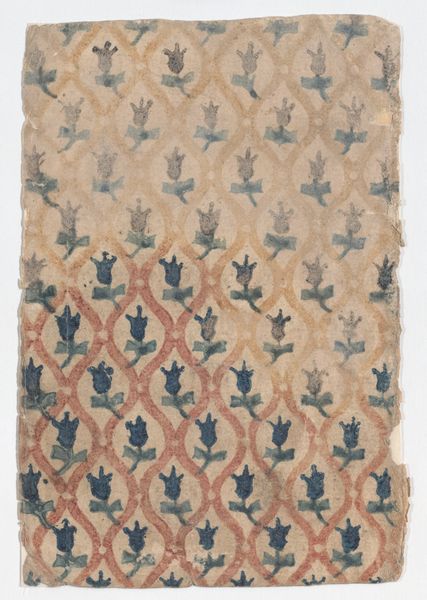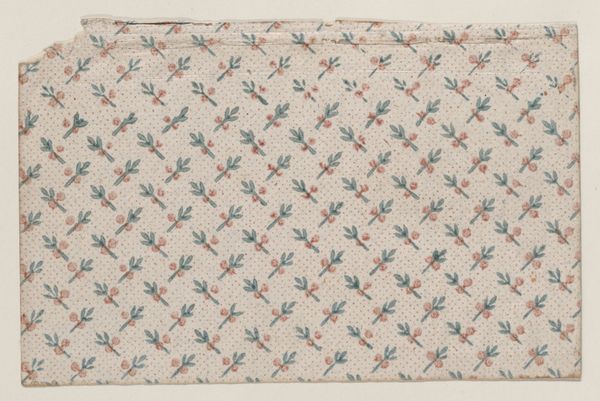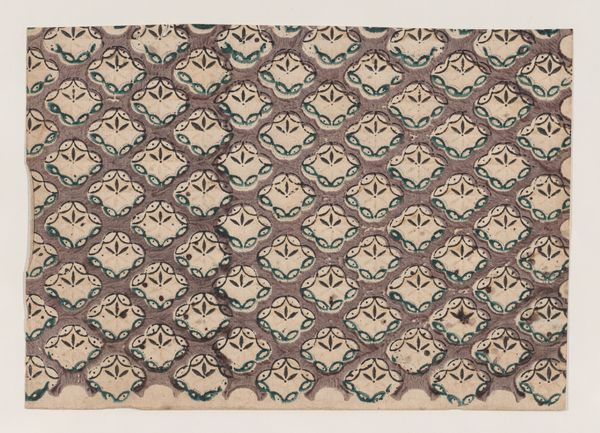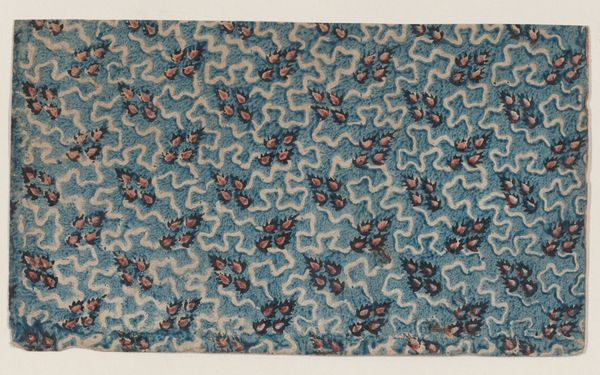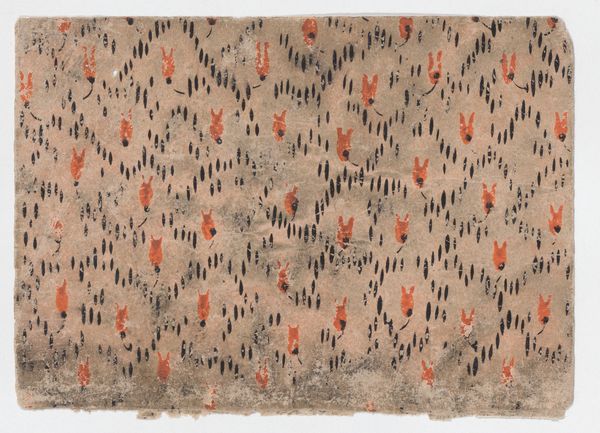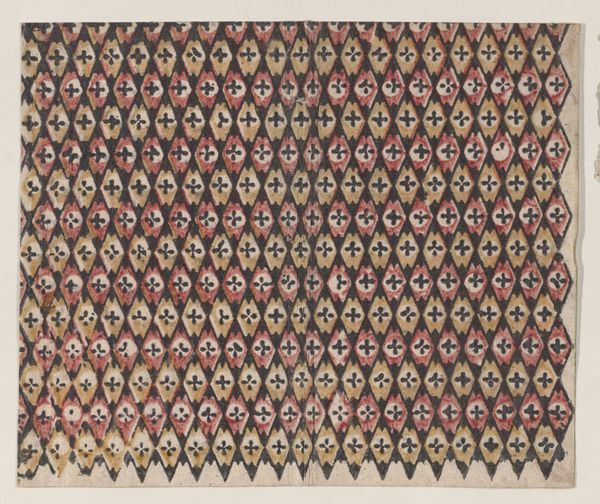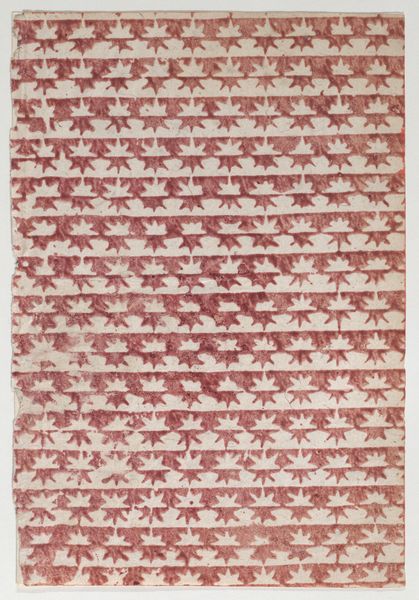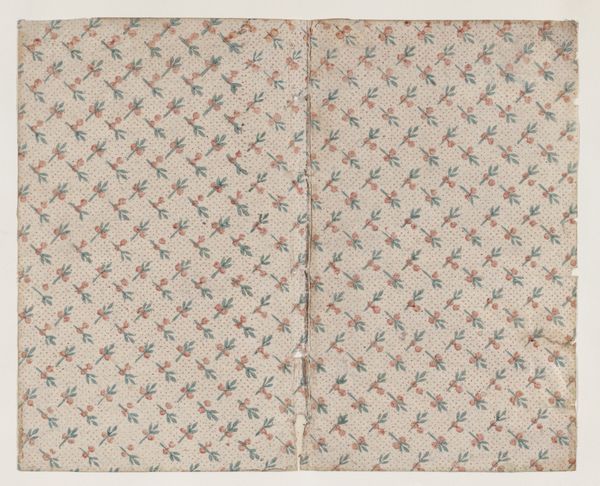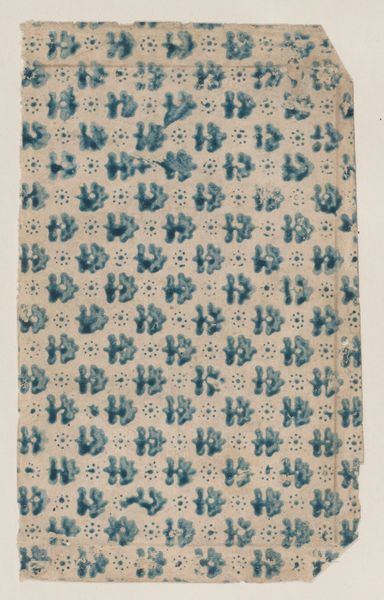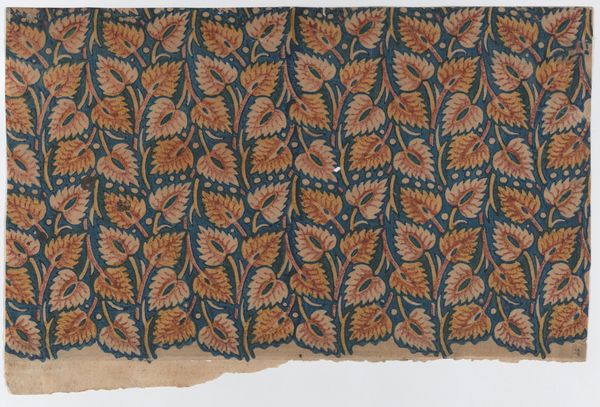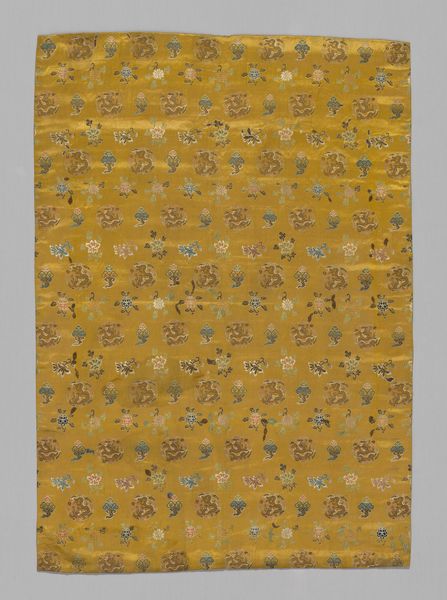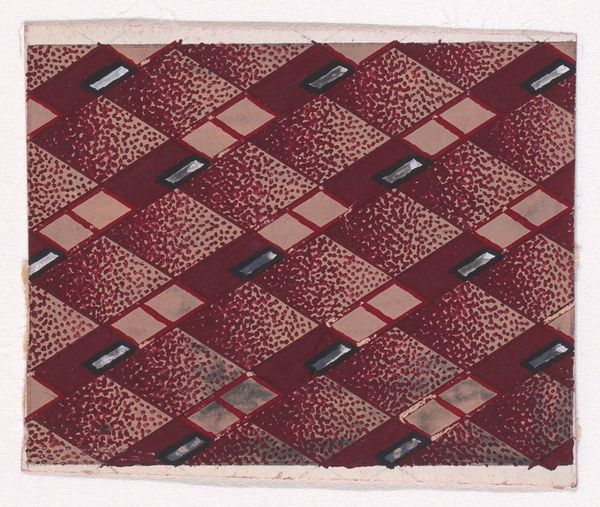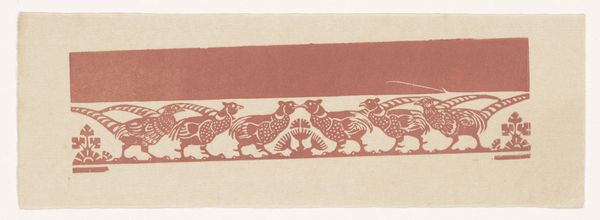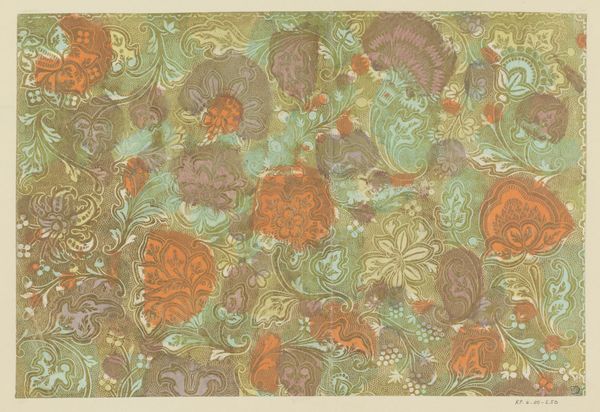
drawing, print, watercolor
#
drawing
#
organic
# print
#
watercolor
#
organic pattern
#
watercolor
Dimensions: Sheet: 4 in. × 5 1/2 in. (10.1 × 14 cm)
Copyright: Public Domain
Curator: Here we have a drawing titled “Sheet with abstract and stripe pattern,” dating roughly to between 1800 and 1900. It's a print, made with watercolor. Editor: It gives the immediate impression of aged wallpaper. I'm struck by the repetition of this organic motif on a slightly worn surface. Curator: Indeed. Its regularity suggests the industrialization of nature, fitting neatly into an era grappling with urbanization and changing relations between the domestic space, the working class, and access to commodities. Consider its potential context: might it be from a pattern book, demonstrating designs for textiles or wallpapers? Editor: Good question! Examining the materials is also key. Watercolor allows for delicate and subtle layering, so thinking of textiles is interesting, because they do add another layer. How does the application affect the overall mood and impact? Does that limitation to small designs and simple organic themes point toward available pigments, accessible labor, and manufacturing constraints? Curator: Absolutely, these material limitations have social consequences! Watercolor's accessibility connects the design to ideas of femininity and domestic craft during the nineteenth century, but who was consuming this kind of "feminine" pattern and why? Did these stripes confine the 'organic' motifs or grant them a different dimension when it comes to identity formation within those consumerist-driven settings? Editor: Precisely. I am wondering too about the artist being listed as anonymous... If we think about the context in that respect, was that related to any labor constraints? Who was producing the object and under what working conditions? These repetitive gestures would affect the laboring body, the consumption habits of those working bodies, their lives and identities! Curator: These abstract patterns hold cultural significance that extends beyond aesthetics. In their period of origin, these visuals held narratives regarding consumer identity and socio-economic progress, and maybe, ultimately, we must question whether or not they should be divorced. Editor: Indeed. Materiality is inextricably linked to meaning, to labor, to the bodies making and consuming the object and the patterns in it, offering unique insights into production and culture that would have shaped human history as we understand it.
Comments
No comments
Be the first to comment and join the conversation on the ultimate creative platform.
